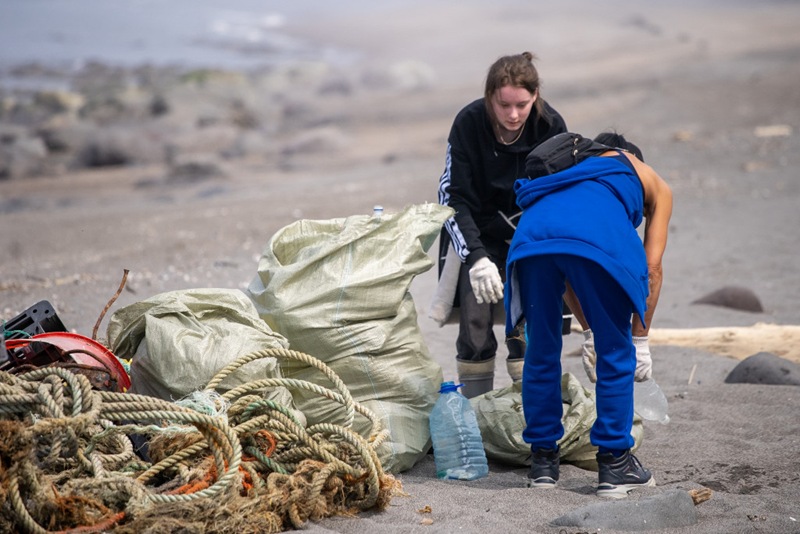Our oceans and coasts are suffocated by anthropogenic debris. Every year, more than 11 million tons of plastic end up in the world’s oceans, turning once-clean waters and shores into landfills. In Kamchatka, known for its unique nature, this problem is particularly acute. Plastic bottles, scraps of fishing nets, fragments of boats, construction waste and even concrete structures disfigure the coast, posing a serious threat to marine ecosystems. The situation is aggravated by the inaccessibility of many sections of the Kamchatka coast, which makes manual garbage collection an incredibly difficult and resource-intensive task.

In response to this environmental challenge, the Clean Coast project is being implemented in Kamchatka. As part of this project, a cloud neural network was developed with the participation of Yandex Cloud specialists, students of the School of Data Analysis and scientists from the Far Eastern Federal University. This technology is designed to become the eyes and analytical center for the planning of cleaning activities. Artificial intelligence (AI) was trained not only to detect debris in photographs of the coast, but also to classify it into six main types: plastic, wood, rubber, iron, concrete and fishing nets. In addition, the neural network is able to determine the boundaries of contaminated areas in the images and give an estimate of the approximate amount of accumulated waste.
The technology is based on a method of semantic image segmentation related to the field of computer vision. It allows you to select specific objects in photographs with high accuracy. To train the model, the School of Data Analysis team has created a specialized application. In it, experts marked up photos of the coast, pointing out the debris with simple mouse clicks. The system reacted instantly by highlighting objects, and a person could clarify the boundaries by adding positive or negative labels. This interactive approach has made it possible to achieve high markup accuracy with minimal time.
This method is particularly valuable in difficult conditions, when debris is partially hidden under rocks, covered with sand or covered with algae – situations typical of wild coasts. In order for the neural network to work effectively on various types of coasts – pebbly, sandy, and covered with vegetation – and not confuse garbage with landscape elements, the developers applied the data augmentation method. They artificially increased the training sample using image transformation algorithms and generative neural networks such as StarGAN. This made the model significantly more resistant to a variety of shooting conditions and terrain features.
The practical results were not long in coming. During the very first expedition, which was planned using data provided by the neural network, it was possible to effectively clean up a section of the territory of the Yuzhno-Kamchatsky reserve, removing about 5 tons of garbage from there. This success demonstrates the technology’s potential to optimize logistics and improve the efficiency of clean-up operations.
The creators of the project see great prospects for its scaling. The developed model can be adapted for monitoring and cleaning other coasts of Russia, including vulnerable Arctic regions. The technology can also be easily integrated into geographic information systems, which will allow you to create detailed maps of pollution foci and monitor the dynamics of the situation.
However, the current version of the neural network in the Clean Coast project is able to recognize only solid household waste. The problem of liquid pollution, such as fuel oil spills, remains more complex. Fuel oil is often mixed with water, and it is difficult to distinguish it from satellite or photographic images. Another group of researchers is working on solving this problem: specialists from the Russian Academy of Sciences, with the technological support of Yandex, are developing a satellite monitoring service for detecting oil stains. This area is a critical addition to efforts to combat solid waste, as oil pollution poses no less a threat to marine ecosystems.
